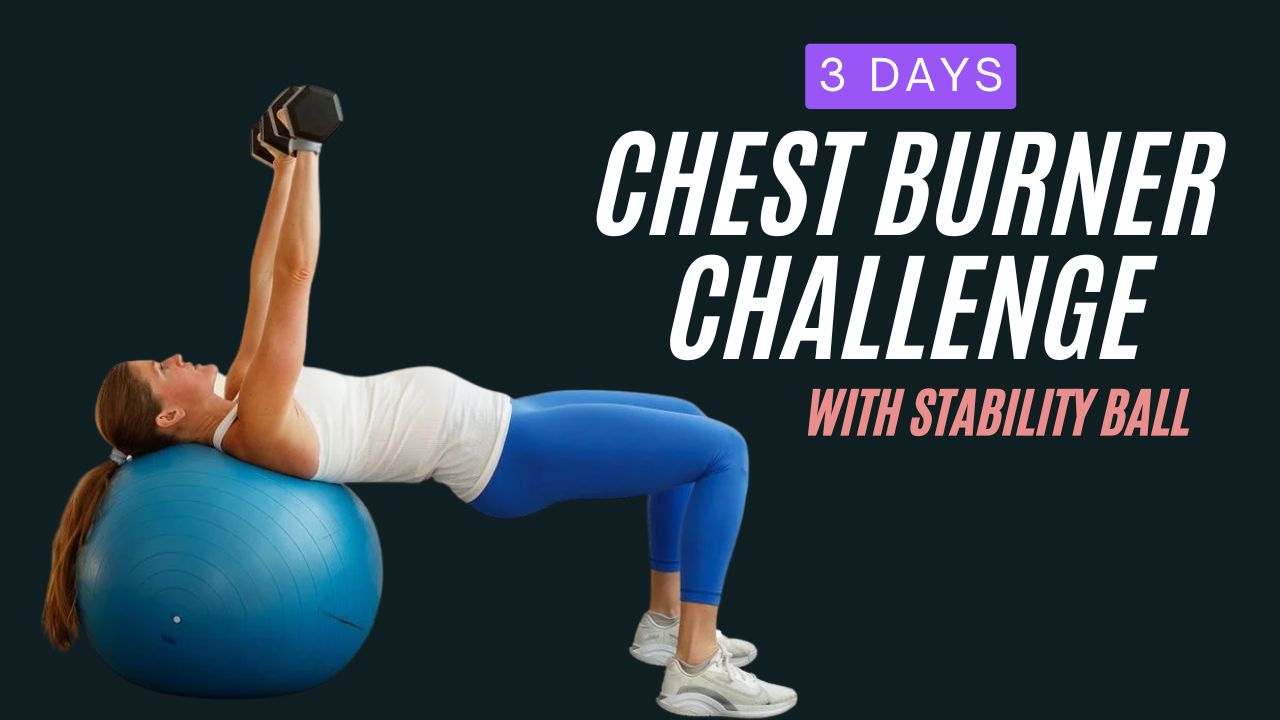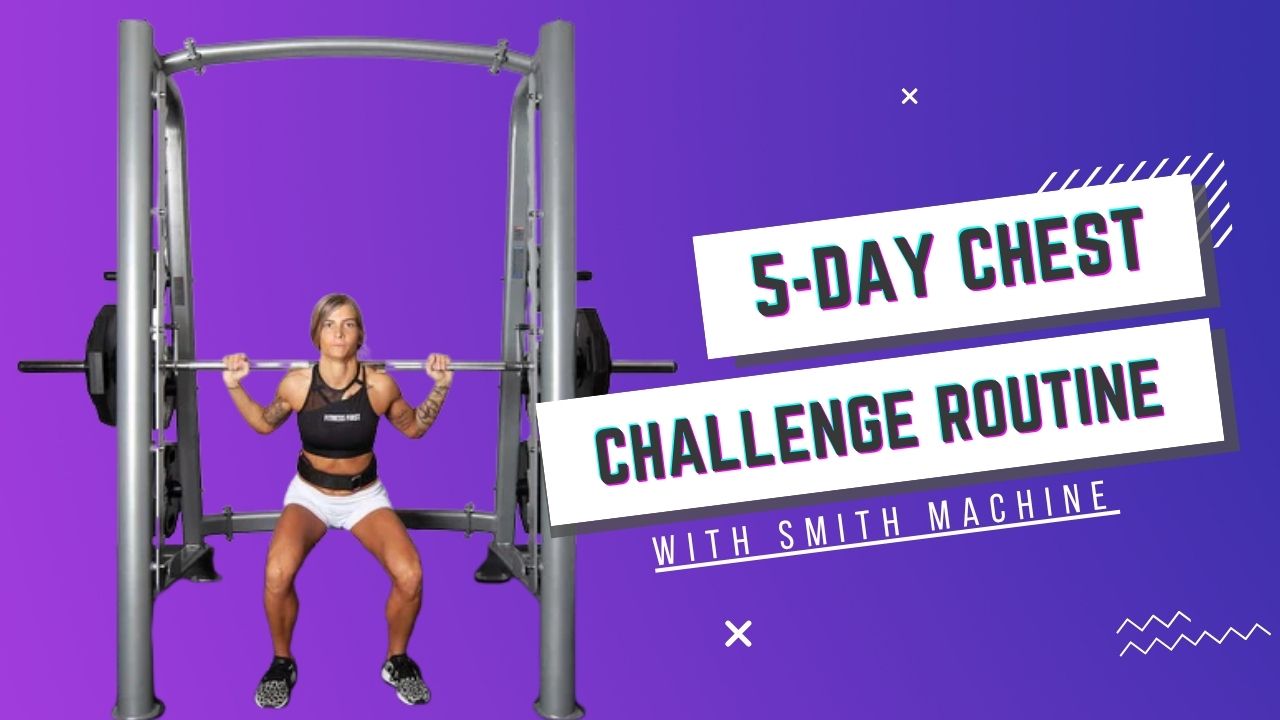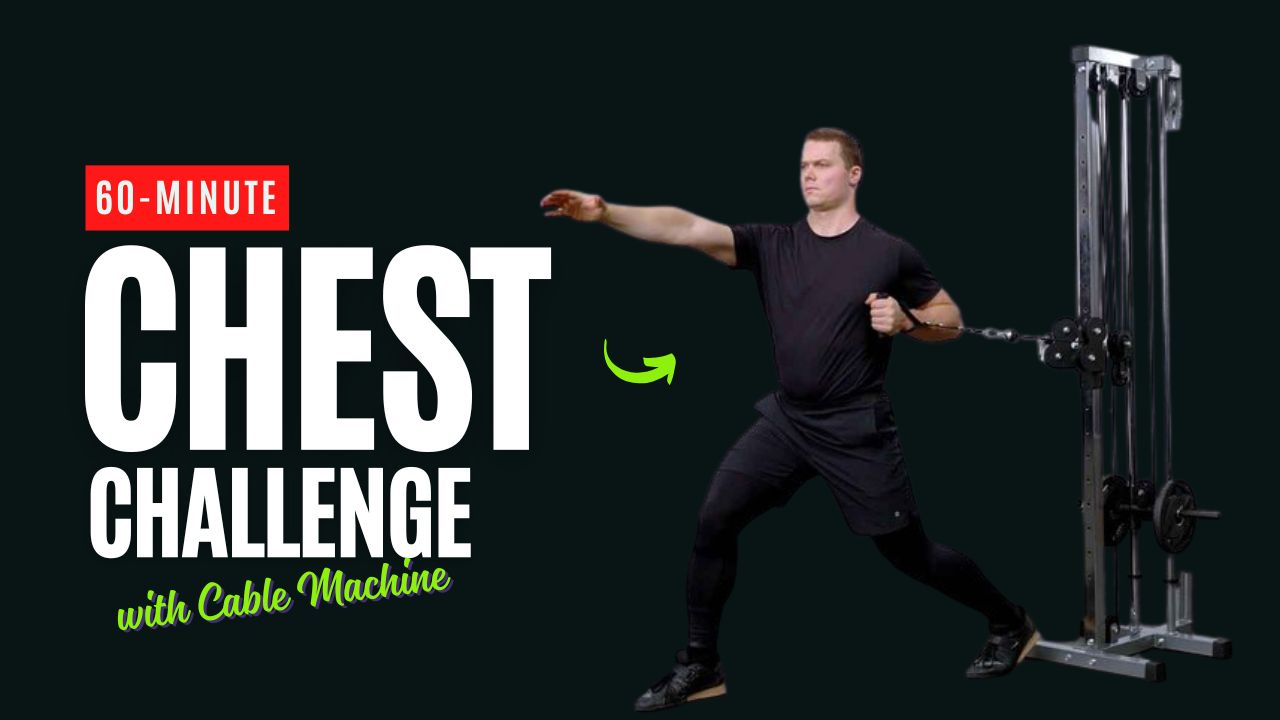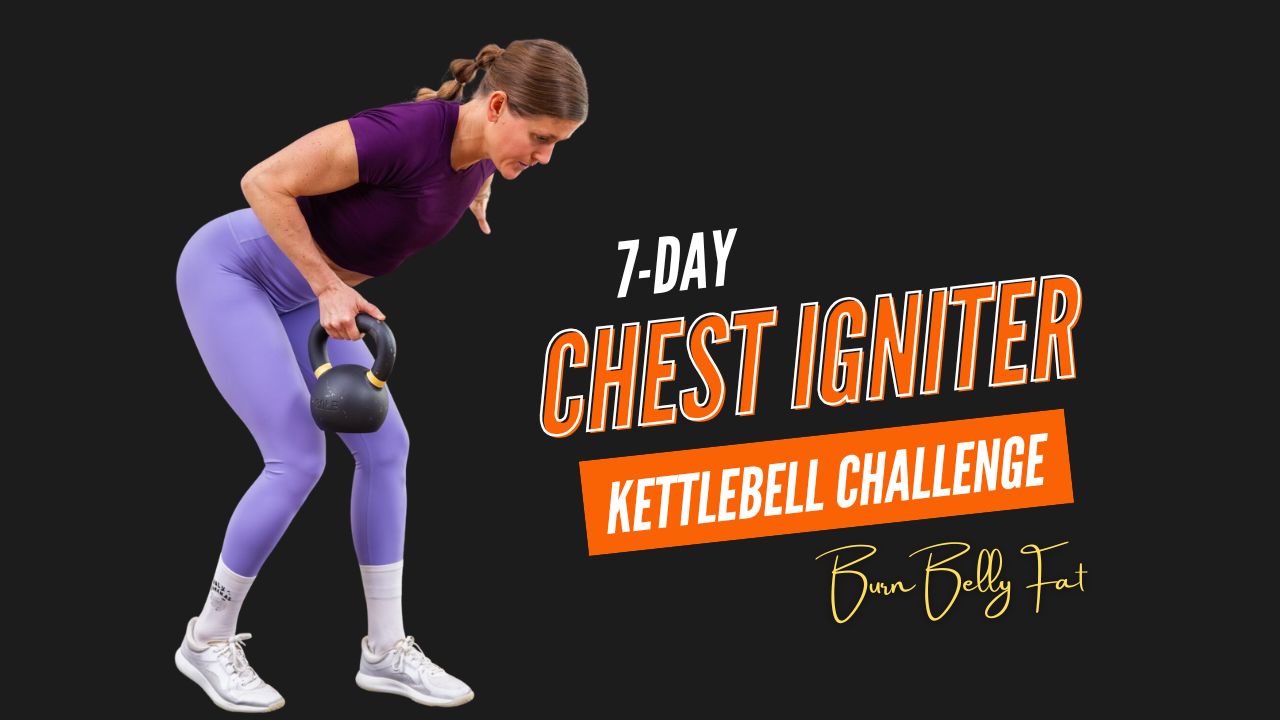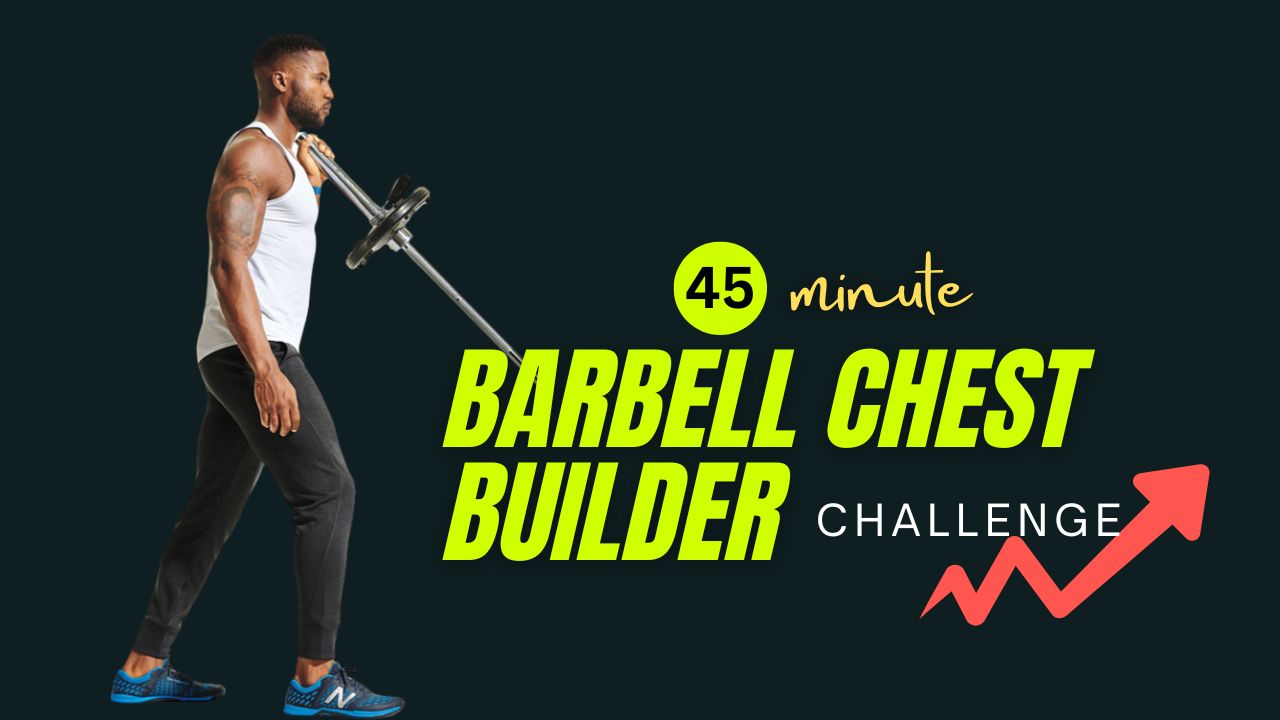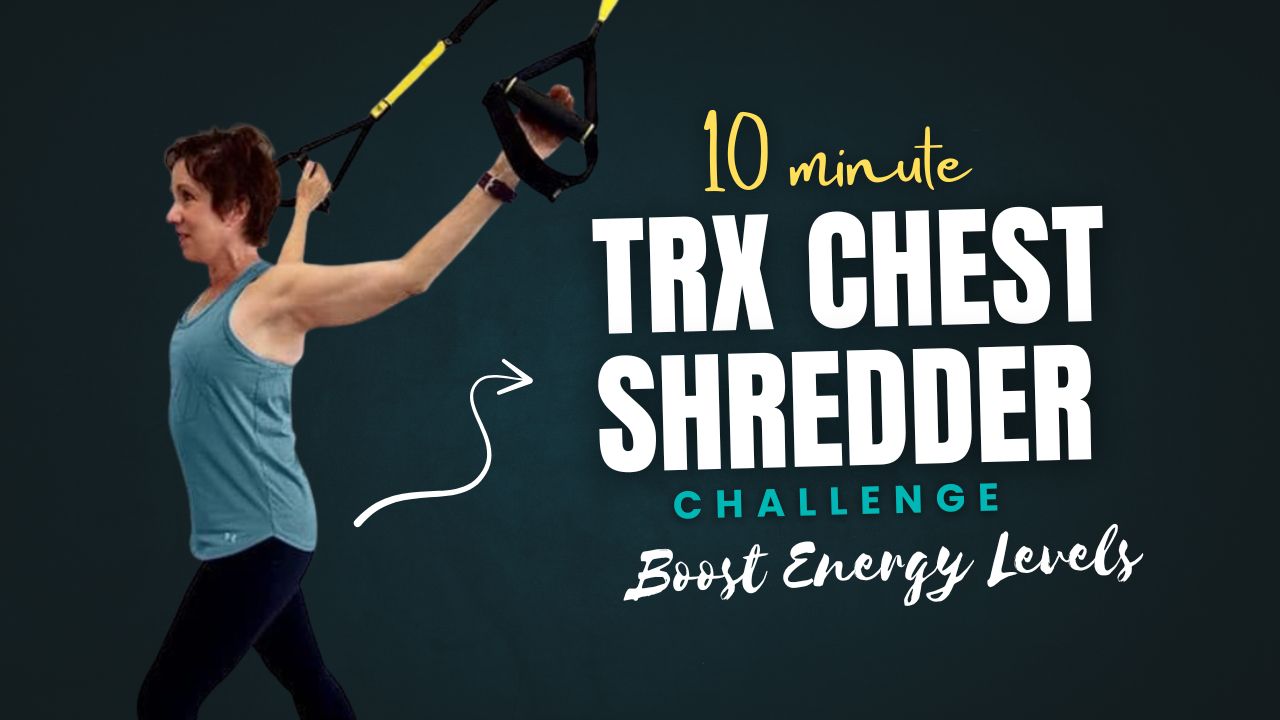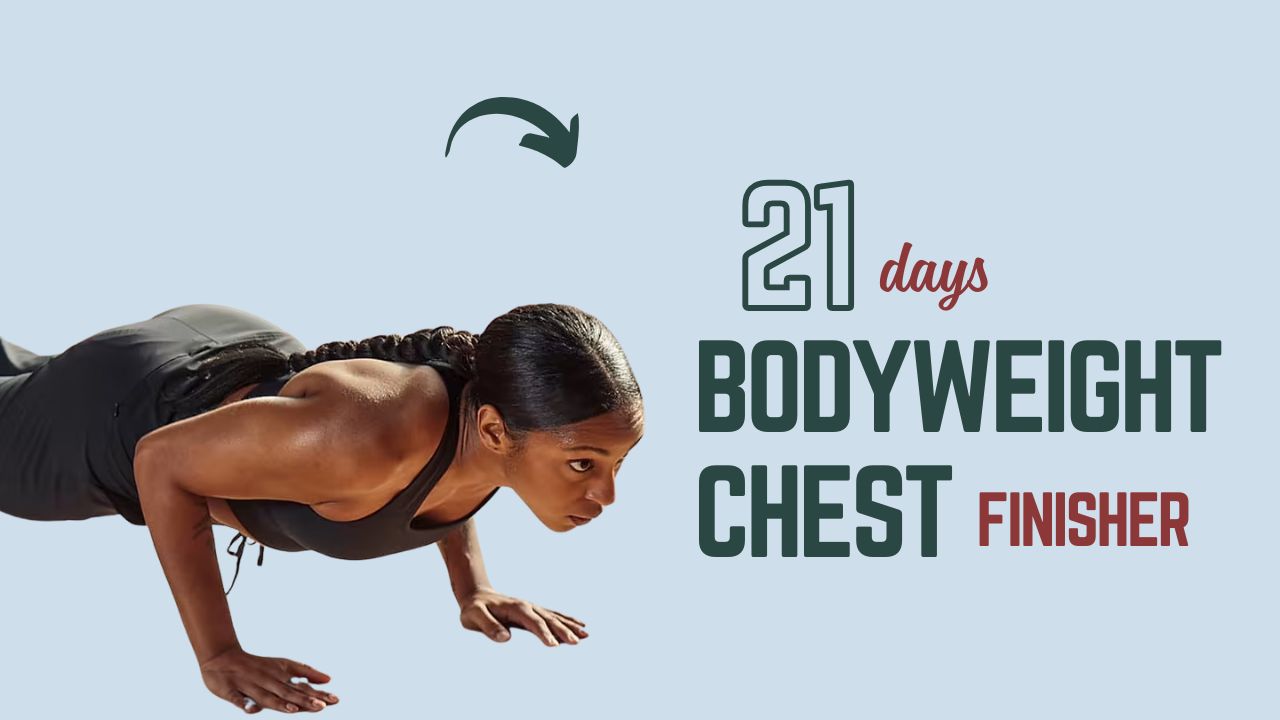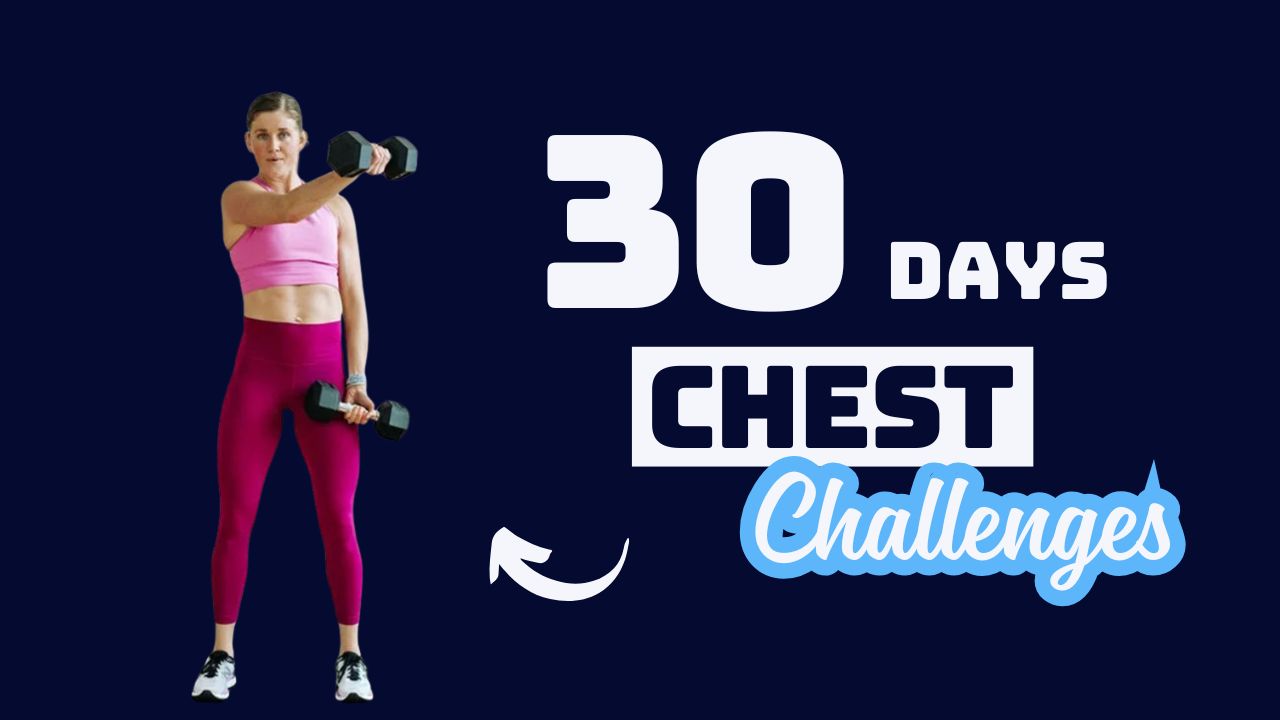Athletes know that raw strength isn’t enough—control, muscle coordination, and range of motion are equally important.
The cable machine is the unsung hero of chest development, offering constant tension that free weights can’t match. This 60-minute chest circuit blends strength, endurance, and functional power to take your athletic performance to the next level.
Whether you’re pushing an opponent, driving through a sprint start, or stabilizing your upper body in explosive movements, a well-trained chest is your foundation.
Do you know?
Unlike barbells or dumbbells, cable machines allow your muscles to stay under tension throughout the entire movement, activating more stabilizers and increasing overall time under tension—key for athletic gains.
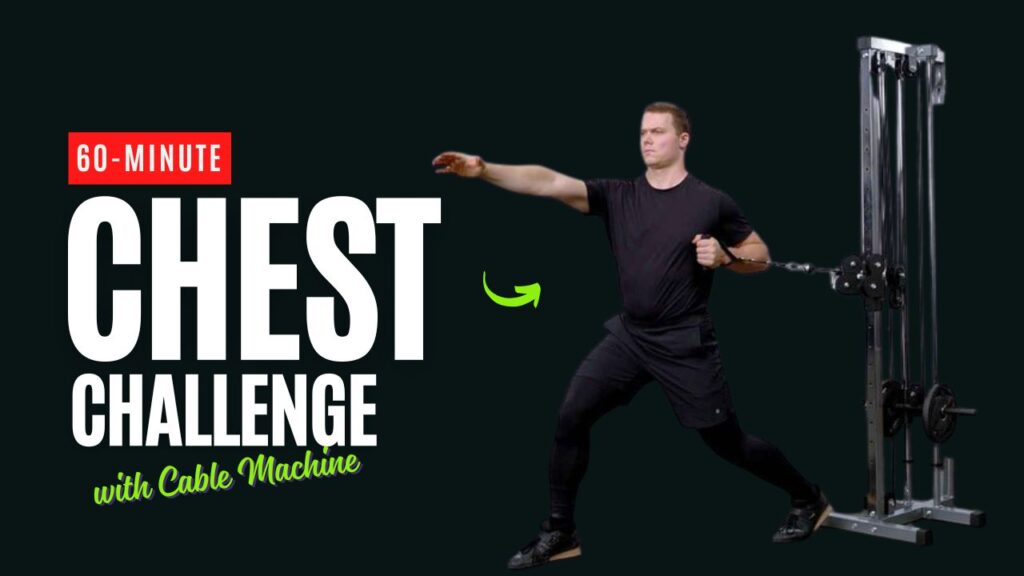
Table of Contents
What Can Happen After 30 Days of the 60-Minute Cable Chest Circuit
| Positive Changes | Possible Challenges |
|---|---|
| Noticeable increase in chest muscle tone and definition. | Initial muscle soreness, especially in the first two weeks. |
| Improved pushing strength and upper body endurance. | Risk of overtraining if done without proper rest days. |
| Better control and stability during athletic movements. | Possible plateau if resistance isn’t progressively increased. |
| Enhanced mind-muscle connection for chest activation. | Minor joint strain if form is not maintained. |
| Increased confidence in performing cable-based exercises. | Fatigue if combined with too many other intense workouts. |
| More balanced upper body strength due to unilateral work. | Need for continued variation to prevent adaptation. |
Do’s & Don’ts for the 60-Minute Cable Chest Circuit
| Do’s | Don’ts |
|---|---|
| Maintain proper form and control throughout each movement. | Don’t use excessive weight that compromises your technique. |
| Keep constant tension on the chest muscles during each rep. | Don’t lock out your elbows completely at the top of presses. |
| Warm up for 5–10 minutes before starting the circuit. | Don’t skip your warm-up or cool-down stretches. |
| Adjust the pulley height correctly for each exercise. | Don’t rush through the exercises just to finish faster. |
| Focus on a full range of motion for maximum muscle activation. | Don’t use momentum or swing the cables. |
| Engage your core to stabilize your body during movements. | Don’t arch your lower back excessively during presses. |
| Rest only as prescribed between sets to maintain intensity. | Don’t train the chest on consecutive days without recovery. |
Best Chest Circuit Workouts For The Challenge
1. Cable Bench Press
Description:
A cable variation of the classic bench press that targets the entire pectoral region while engaging stabilizing muscles for better athletic transfer.
How to:
- Set the cable pulleys to the lowest position and attach D-handles.
- Position a flat bench in the center, facing away from the machine.
- Lie back holding each handle with palms facing forward.
- Press the handles upward until arms are fully extended.
- Lower slowly, keeping elbows at about a 45-degree angle to your torso.
Tip: Keep your wrists neutral to avoid unnecessary strain.
2. Standing Cable Chest Fly
Description:
A wide-arc movement that stretches and contracts the chest, improving range of motion and muscle fiber activation.
How to:
- Set the pulleys at shoulder height.
- Stand in the middle, grabbing a handle in each hand.
- Step forward into a staggered stance for stability.
- With a slight bend in the elbows, bring your hands together in front of you.
- Slowly return to the starting position, feeling the stretch in your chest.
Myth Breaker: Many believe heavy weight is key for chest flies, but moderate resistance with controlled form produces better results and reduces injury risk.
3. Incline Cable Press
Description:
Targets the upper chest, which is often underdeveloped in athletes, enhancing pushing power and shoulder stability.
How to:
- Position the bench at a 30–45° incline between two low-set cable pulleys.
- Hold each handle with palms facing forward.
- Press upward in a controlled motion until arms are fully extended.
- Lower slowly, maintaining constant cable tension.
Pro Tip: Keep your back pressed against the bench to prevent lower back arching.
4. Low-to-High Cable Fly
Description:
An upward sweeping motion that isolates the upper chest and works shoulder flexion for explosive movements.
How to:
- Set the pulleys at the lowest setting.
- Stand upright with a handle in each hand.
- With elbows slightly bent, sweep the cables upward and together until they meet at chest height.
- Lower slowly back to the starting point.
Did You Know? This movement mimics the chest’s natural fiber direction, making it one of the most effective isolation moves for upper pecs.
5. Cable Crossover (High-to-Low)
Description:
A downward fly motion that targets the lower chest and supports better body mechanics in pushing movements.
How to:
- Set the pulleys to the highest setting.
- Step forward with handles in each hand, elbows slightly bent.
- Bring hands down and together in a scooping motion toward your waist.
- Return slowly to the start.
Tip: Avoid leaning too far forward—let your chest, not momentum, control the movement.
6. Single-Arm Cable Press
Description:
Builds unilateral strength, corrects imbalances, and engages core stability—essential for athletes in rotational sports.
How to:
- Set one pulley to chest height.
- Stand sideways to the machine, holding the handle in the working hand.
- Press forward while keeping your body stable.
- Return slowly without letting the cable pull you back.
- Complete reps for one side before switching.
7. Cable Pullover
Description:
Although often seen as a back move, this version heavily engages the chest while improving overhead power and ribcage expansion.
How to:
- Attach a straight bar to a high pulley.
- Stand facing the machine, holding the bar with a shoulder-width grip.
- With arms slightly bent, pull the bar down in a sweeping arc until it reaches your thighs.
- Slowly return to starting position.
60-Minute Chest Circuit Workout Plan
Format: Perform each exercise back-to-back with minimal rest between moves. Rest 60–90 seconds between circuits. Complete 3–4 rounds.
| Exercise | Sets | Reps | Rest |
|---|---|---|---|
| Cable Bench Press | 3 | 10–12 | 30 sec |
| Standing Cable Chest Fly | 3 | 12–15 | 30 sec |
| Incline Cable Press | 3 | 10–12 | 30 sec |
| Low-to-High Cable Fly | 3 | 12–15 | 30 sec |
| Cable Crossover (High-to-Low) | 3 | 12–15 | 30 sec |
| Single-Arm Cable Press | 3 | 8–10 (each side) | 30 sec |
| Cable Pullover | 3 | 10–12 | 30 sec |
Conclusion
A strong, well-developed chest isn’t just about aesthetics—it’s about unlocking your body’s full athletic potential.
By using the cable machine, you keep constant tension on the muscles, activate stabilizers, and work through a full range of motion that free weights alone can’t provide.
This 60-minute chest circuit is designed to build explosive pushing power, enhance muscle endurance, and improve coordination, all while reducing joint strain.
Commit to this program consistently, focus on controlled movements, and you’ll not only see visible chest growth but also feel a noticeable boost in your performance—whether that’s on the field, in the gym, or in everyday life. Strength, stability, and power start here.
Frequently Asked Questions (FAQs)
Can beginners try this 60-minute cable chest circuit?
Yes, but beginners should start with lighter weights and focus on proper form before increasing resistance. Reducing the circuit to 2 rounds is also recommended for new lifters.
How many times per week should I do this workout?
For best results, perform this chest circuit 1–2 times a week, allowing at least 48 hours of recovery between sessions.
Is the cable machine better than free weights for chest training?
Both have benefits. Cable machines provide constant tension and smoother resistance, making them ideal for muscle activation and joint-friendly training. Free weights are better for maximal strength development.
Can I replace some exercises if I don’t have an adjustable bench?
Yes. Incline moves can be replaced with standing low-to-high flies or pressing at an upward angle from a staggered stance.
Will this workout improve my sports performance?
Yes. The combination of strength, endurance, and unilateral training in this circuit supports pushing power, core stability, and functional chest strength—all valuable for athletic activities.
How long before I see results?
With proper nutrition and consistent training, noticeable strength and muscle tone improvements can appear within 4–6 weeks.
Do I need to warm up before starting?
Absolutely. A 5–10 minute dynamic warm-up, including shoulder rotations, push-ups, and light cable work, will prepare your joints and muscles for the session.
